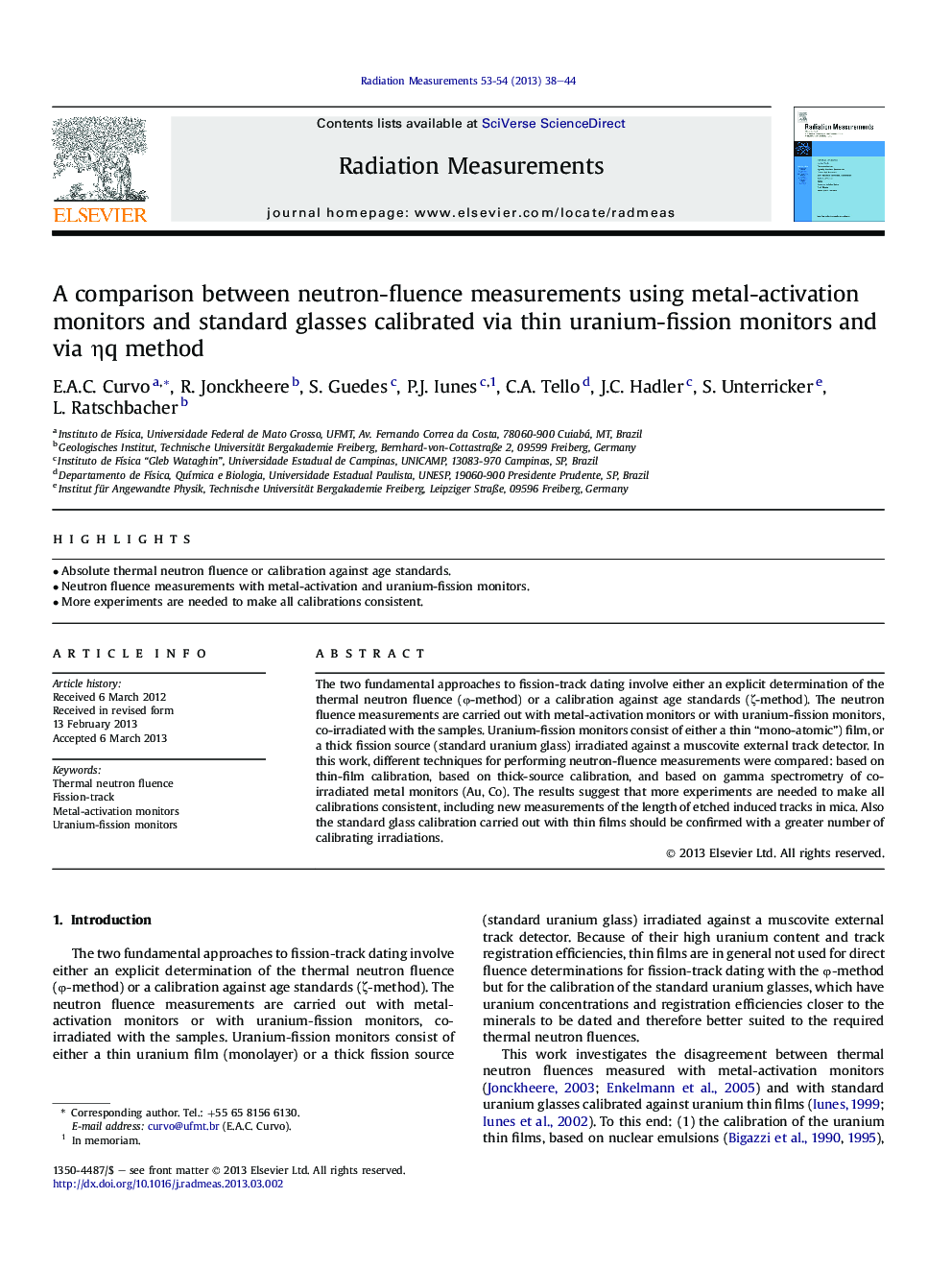| Article ID | Journal | Published Year | Pages | File Type |
|---|---|---|---|---|
| 8251021 | Radiation Measurements | 2013 | 7 Pages |
Abstract
The two fundamental approaches to fission-track dating involve either an explicit determination of the thermal neutron fluence (Ï-method) or a calibration against age standards (ζ-method). The neutron fluence measurements are carried out with metal-activation monitors or with uranium-fission monitors, co-irradiated with the samples. Uranium-fission monitors consist of either a thin “mono-atomic”) film, or a thick fission source (standard uranium glass) irradiated against a muscovite external track detector. In this work, different techniques for performing neutron-fluence measurements were compared: based on thin-film calibration, based on thick-source calibration, and based on gamma spectrometry of co-irradiated metal monitors (Au, Co). The results suggest that more experiments are needed to make all calibrations consistent, including new measurements of the length of etched induced tracks in mica. Also the standard glass calibration carried out with thin films should be confirmed with a greater number of calibrating irradiations.
Keywords
Related Topics
Physical Sciences and Engineering
Physics and Astronomy
Radiation
Authors
E.A.C. Curvo, R. Jonckheere, S. Guedes, P.J. Iunes, C.A. Tello, J.C. Hadler, S. Unterricker, L. Ratschbacher,
